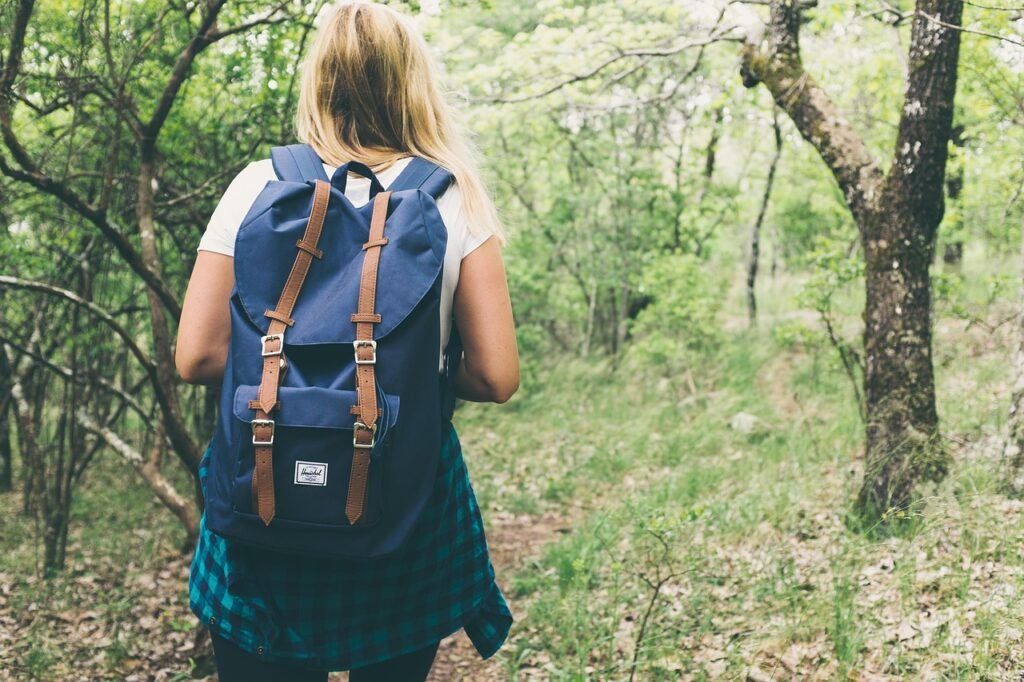What to Pack for a 3-Hour Hike in Summer: Day Hiking Essentials for Hot Weather
Heading out for a quick summer hike? Whether you’re exploring your local nature preserve or venturing into a national park, knowing what to pack for a 3-hour hike in summer can make or break your experience. The right gear helps you stay cool, hydrated, and safe — even when the temperature rises.
This guide breaks down everything you need to bring on a short summer hike, why each item matters, and how to pack light without sacrificing safety. Perfect for beginners and casual hikers, this list is built for comfort, not overkill.

Why Pack Strategically for a 3-Hour Hike?
You might think a three-hour hike is short enough that you can get by with just a water bottle and good shoes. But summer weather brings specific challenges — from dehydration and sunburn to sudden storms and trail hazards. Being even slightly unprepared can turn a relaxing hike into an uncomfortable (or unsafe) one.
Strategic packing helps you:
- Stay hydrated and energized
- Prevent overheating and sun damage
- Handle minor injuries or discomfort
- Adapt to changing weather
- Enjoy the hike without carrying excess weight
Quick Overview: What to Pack for a 3-Hour Hike in Summer
Here’s a summarized checklist before we dive into the details:
- Breathable clothing (moisture-wicking)
- Sun protection (hat, sunglasses, SPF)
- 2 liters of water
- High-energy snacks
- Trail shoes or hiking sandals
- Navigation tools (phone, map, or GPS)
- Small first aid kit
- Bug spray and lip balm
- Lightweight backpack or hydration pack
- Optional: cooling towel, trekking poles, emergency whistle
Clothing: What to Wear for a 3-Hour Summer Hike
Your clothing should keep you dry, protect you from UV rays, and prevent overheating. Avoid cotton — it traps sweat and dries slowly. Opt for lightweight, synthetic, or merino wool fabrics.
Essential Summer Hiking Clothing
- Moisture-wicking shirt: Short sleeve or tank top made of synthetic fabric
- Hiking shorts or athletic leggings: Avoid denim or anything that chafes when wet
- Sun hat or cap: Wide-brimmed for sun protection or a baseball cap for shade
- Sunglasses: Preferably polarized and with UV protection
- Light jacket or windbreaker: In case of rain or wind at higher elevations
In areas with tall grass or ticks, lightweight hiking pants may be better than shorts — even in summer.
Footwear: Stay Comfortable on the Trail
For a 3-hour summer hike, you don’t necessarily need heavy boots. What you need is traction, breathability, and comfort.
- Trail runners: Best for dry, even terrain and faster movement
- Lightweight hiking shoes: More ankle support for uneven trails
- Hiking sandals: Good for hot weather and water crossings (but less protection)
Always wear synthetic or wool socks — never cotton. Bring a spare pair in your pack if it’s humid or your feet tend to sweat.
Hydration: The Most Important Item
Dehydration is the #1 risk on a summer hike — even short ones. On average, you should drink 0.5 to 1 liter of water per hour in warm conditions. For a 3-hour hike, that means packing at least 1.5 to 2 liters.
Water Carrying Options
- Hydration bladder (2L or 3L): Fits inside most daypacks and offers hands-free drinking
- Insulated water bottle: Keeps water cold, especially useful on exposed trails
- Collapsible bottle: Great for space-saving or ultralight setups
If hiking in remote areas, bring a water filter straw or purifier in case you need to refill from a stream.
Nutrition: What Snacks to Bring
Even if you don’t plan to stop for a full lunch, it’s smart to bring high-energy, quick-digesting foods. You’ll burn more calories than you think — especially on hills or in the heat.
Smart Trail Snacks
- Trail mix (with nuts, dried fruit, and chocolate)
- Granola or protein bars
- Beef jerky or vegan jerky
- Peanut butter packets
- Electrolyte tablets or hydration drink mix
Avoid snacks that melt easily or require refrigeration. If it’s extremely hot, avoid chocolate-based snacks unless stored inside a cooler pouch.
Navigation & Communication
Even on short hikes, it’s wise to have basic navigation tools. Trails can split, signage can be confusing, and phone batteries can die.
- GPS hiking app (like AllTrails or Gaia GPS)
- Offline maps downloaded to your phone
- Paper map and compass (as a backup)
- Fully charged phone with battery saver on
If hiking solo or in areas with no service, consider bringing a whistle or personal locator beacon (PLB).
Other Essentials to Pack
1. First Aid Kit (Basic)
- Band-aids and blister pads (like moleskin)
- Antiseptic wipes
- Adhesive tape or gauze
- Ibuprofen or antihistamines
2. Bug Repellent & Lip Balm
Bring a small bottle of insect repellent — especially in wooded or marshy areas. Lip balm with SPF helps prevent sunburn and chapping.
3. Lightweight Backpack or Waist Pack
Use a comfortable daypack with a hydration sleeve, or a hiking waist pack if you’re going ultra-light. Make sure it has room for snacks, layers, and basic first aid.
4. Cooling Items
- Cooling towel (soak in water and wrap around your neck)
- Small microfiber towel (to dry sweat or wet hands)
What NOT to Bring on a 3-Hour Hike
Unless your hike is remote or extremely challenging, you can leave these behind to save weight:
- Heavy multi-tools
- Full-size flashlight (use a mini or headlamp instead)
- Extra shoes or boots
- Large knives or axes
- Books or bulky camera gear
The goal is to pack light but smart — bring what you’ll use, and skip what you won’t.
Pack Layout Tips
To stay balanced and avoid discomfort, pack your bag with this general structure:
- Heaviest items (water) near your back, in the center
- Frequently used items (snacks, sunscreen) in outside pockets
- Spare layers and first aid kit in bottom or side compartments
Use ziplock bags or ultralight stuff sacks to stay organized and prevent leaks.
Frequently Asked Questions
Do you really need to pack food for a short hike?
Yes, even for a 3-hour hike, it’s smart to bring calorie-dense snacks. Hiking in summer heat increases energy use, and having snacks like trail mix or granola bars helps you stay energized, avoid dizziness, and recover faster.
How much water should I bring for a 3-hour hike in summer?
Plan on bringing 1.5 to 2 liters of water for a 3-hour summer hike. If the trail is exposed, uphill, or very hot, you may need more. A hydration bladder or insulated bottle works best for keeping water accessible and cool.
What size backpack is best for a 3-hour day hike?
A 10- to 20-liter daypack is ideal for a short summer hike. It’s large enough to carry water, snacks, sun protection, and a few small extras without adding unnecessary weight or bulk.
Should I bring trekking poles for short hikes?
Trekking poles are optional for short hikes but can be helpful if the trail has steep inclines, loose rocks, or if you want extra support for your knees and balance. They’re especially useful for uneven terrain or descending slopes.
Is it safe to hike in summer heat?
Yes, hiking in summer is safe with the right precautions. Start early to avoid peak sun, stay hydrated, wear breathable clothing, and use sun protection. If the heat index is dangerously high, it’s best to shorten your hike or reschedule.
